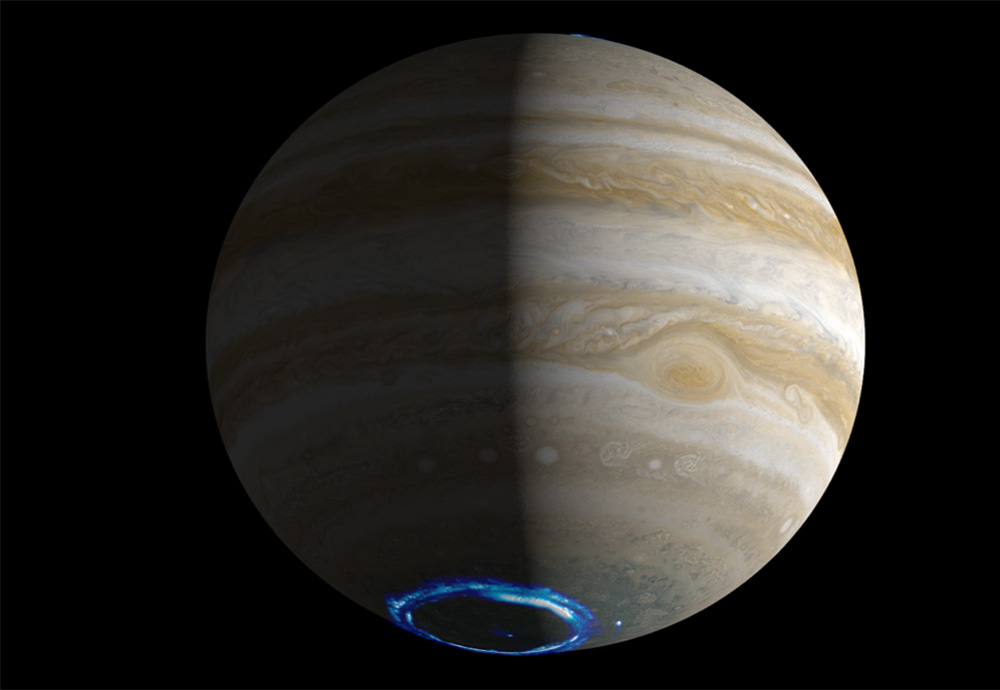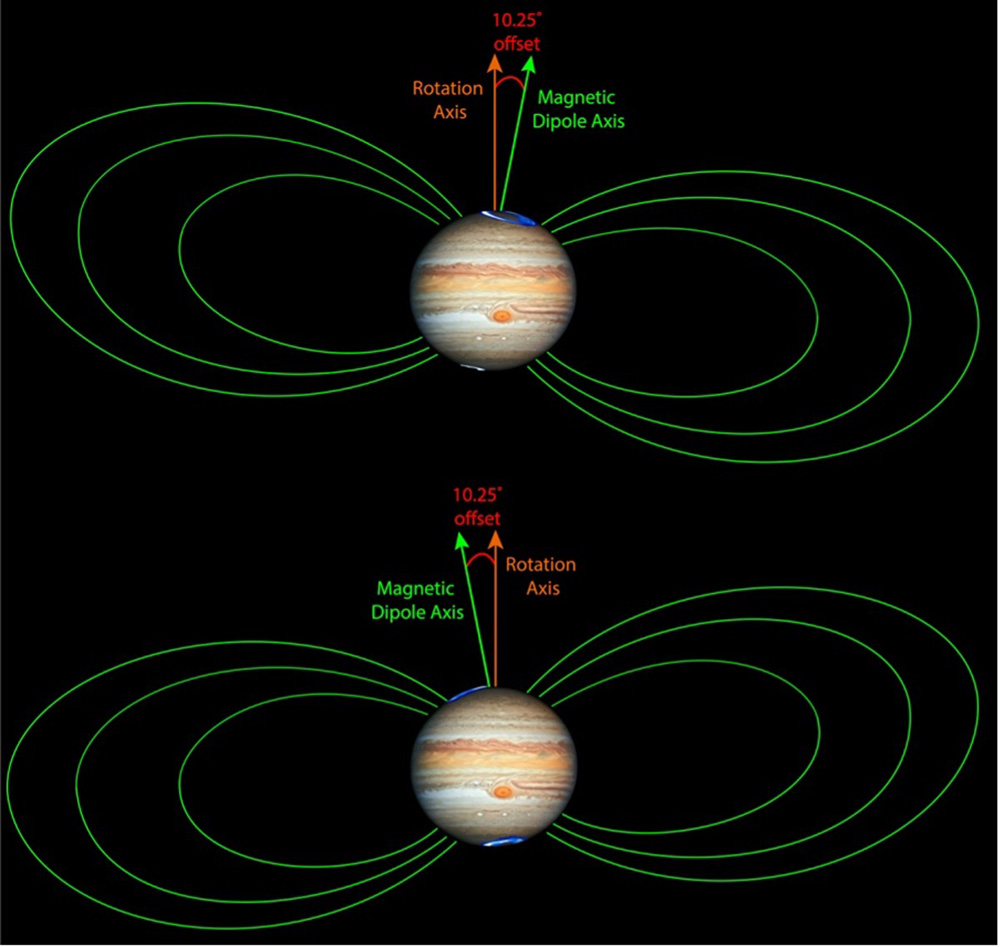The unique vantage point of NASA’s Juno spacecraft has revealed a new side to Jupiter’s auroras.

NASA / JPL-Caltech / SSI / Southwest Research Institute / Malin Space Science Systems / Italian Space Agency (ASI) / Italian National Institute for Astrophysics (INAF) / JIRAM / Björn Jónsson / ULiège / Bertrand Bonfond
If you’ve ever been to the northern parts of Norway or Canada and seen the curtains of striking light hanging from the sky, you must have thought nothing could be more beautiful. But while Earth’s auroras are indeed enchanting, they’re far from the greatest.
With a magnetic field 20 times stronger than Earth’s, Jupiter lays claim to the most powerful auroras in the entire solar system. Its field channels charged particles toward the planet’s poles, resulting in vibrant and wild auroras that emit most types of light known to us — visible light, infrared, ultraviolet, radio, and X-ray emissions.
Jupiter’s auroras are many times more flamboyant and compelling than Earth’s could ever hope to be. And while we have been observing them for several decades using the Hubble Space Telescope, recent data collected by NASA’s Juno mission from a new vantage point showed that Jupiter’s auroras can shut off at night, a new and completely unexpected finding.
Two Planets, Two Auroras
The auroras of Jupiter and Earth are starkly different in how they’re powered. Our planet’s auroras depend on the incoming solar wind. Around Jupiter, however, there’s plenty of charged material inside its magnetosphere, much of it spewed from the volcanic moon Io, acting as a giant system of current powering the auroras. Jupiter’s auroras are thus relatively unaffected by the Sun, and its nightside auroral show ought to look like what we see on the dayside.
The planets differ also in their auroral patterns. While both planets display auroral ovals, the circular regions of auroral emission around their magnetic poles, only Jupiter has auroral emission located inside the auroral ovals, also known as polar auroras.
To understand these differences, we need to observe Jupiter’s auroras closely. And while Earth’s atmosphere effectively blocks Jupiter’s auroral ultraviolet light from reaching the ground, the Hubble Space Telescope has taken a front-row seat to the planet’s light show from above our atmosphere.
Yet the entire show is periodically out of even Hubble’s reach because Jupiter’s magnetic axis is not aligned with its rotation axis. Its nightside auroras, which last for several hours every 10-hour Jovian day, have remained invisible from our vantage point. Only recently has NASA’s Juno mission finally given us the first full view of Jupiter’s auroras on its day and night sides.

NASA / ESA / A. Simon (Goddard Space Flight Center) / M.H. Wong (University of California, Berkeley) / OPAL team / V. Hue (Southwest Research Institute) / B. Bonfond (Université de Liège)
Day vs. Night
Scientists were expecting the polar auroras to remain visible on Jupiter’s nightside. But when a team led by Dr. Thomas Greathouse (Southwest Research Institute) looked at Juno data from the nightside, they were surprised to discover that a part of Jupiter’s polar auroras instead dims dramatically. The result was published in the Journal of Geophysical Research.
The solar-driven nature of these auroras remains a mystery to scientists. One potential explanation is that sunlight is more important than we thought, acting as a catalyst. During Jupiter’s day, the extreme solar ultraviolet light ionizes molecules in Jupiter’s upper atmosphere, enabling charged particles to flow across its atmosphere and trigger auroral emission. This source of charged particles disappears at night and could explain Juno’s puzzling discovery.
The Juno mission, whose operations have been extended to 2025, will continue to investigate this mystery and shed further light on its origin. It will also continue to provide brilliant images of Jupiter’s night light show.
 0
0









Comments
You must be logged in to post a comment.